Your brand is your most valuable differentiator in a highly competitive landscape. Your unique personality, values and promises set you apart from the crowd, and enable the consumers, employees and stakeholders in your target market to emotionally connect with you.
But to achieve that ambition, it demands nothing less than full-time management. Working with over 1,500 global and growing brands, we recognise the immense importance of brand management in generating loyal customers, raising awareness and building brand equity.
In this ultimate guide, we’ll explain exactly why brand management is something today’s companies cannot overlook, and share our advice on how to set up your brand for lasting success.
- Discover what brand management involves and who’s responsible for it
- Explore the 6 defining principles of brand management
- Follow our standout steps for successful brand management
- Overcome the key challenges affecting modern brand managers
Ready to become better at brand management? Then let’s get started…
What is brand management?
Brand management is a very broad term. In a nutshell, it’s the strategies, techniques and processes your organisation uses to maintain and improve your brand in the long term.
Everything from your brand guidelines, strategy and overall identity, to the individual marketing materials that reach your audiences, must be carefully structured, directed, adapted and analysed to maximise your brand’s potential.
Is brand management the same as branding?
No. Your branding is the process of building your brand. It’s where you establish your brand positioning, visual identity, tone of voice, and the many other facets of your overall brand identity. Brand management is the process of monitoring, maintaining and evolving this identity once it’s established.
In other words, think of brand management as the vehicle that drives your branding to its true potential.
Marketing and brand management are not the same either. Brand management extends far beyond your marketing team – it incorporates your salespeople, customer service reps, HR professionals, recruiters and more. Essentially, any department that engages with your customers, staff or wider audiences has a role to play in brand management.
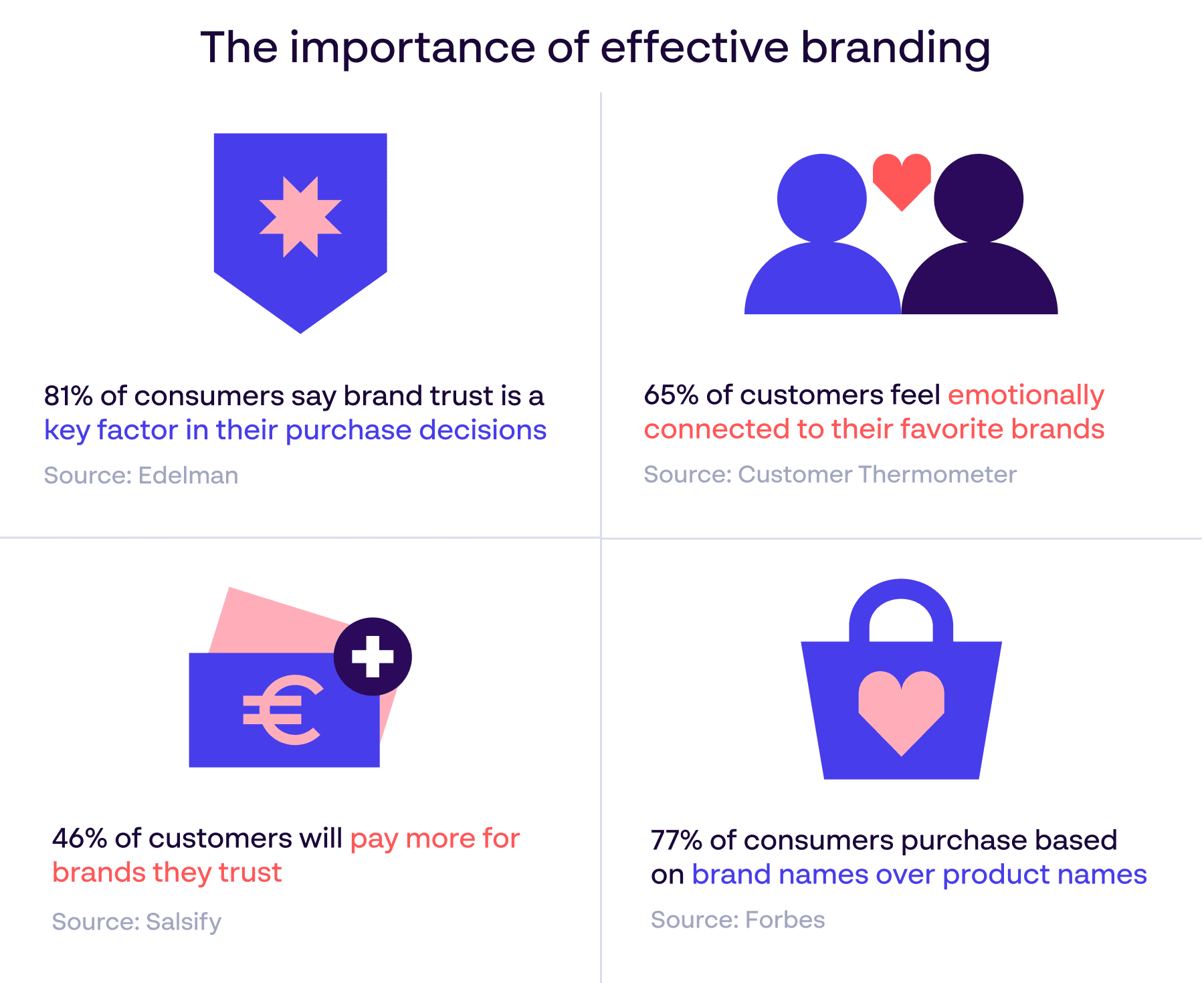
What does brand management involve?
So, what does strategic brand management mean in practice? Again, there’s a wide range of areas this touches, but typically it will involve:
- Developing and continually refining your brand strategy
- Adapting brand assets following any switches in strategy, graphics or tone
- The evolution of your brand identity
- Maintaining brand consistency across all communication channels
- Monitoring your brand health and reputation among audiences, including crisis management
- Overseeing the development and execution of brand communications
- Strategies to improve brand equity and grow loyalty among your consumers
What is brand asset management?
Brand asset management is the specific management and monitoring of the various assets and marketing materials that promote your brand. It’s essentially how you organise and administer the logos, campaign assets, colour palettes, graphics and more to ensure these are completely consistent on all platforms.
Software such as Digital Asset Management (DAM) systems are essential to fulfilling this important task, allowing you to govern all approved assets your organisation creates in one central location.
Who should be responsible for brand management?
As noted earlier, the responsibility of brand management should not fall at the feet of your CMO or marketing manager. It’s a completely different animal, and demands a dedicated brand manager or brand management team to oversee.
Your brand manager should have a good understanding of marketing principles, including digital marketing and market research, but also maintain regular communication with your various customer and employee-facing departments. They may also be responsible for:
- Identifying and installing brand management platforms and software
- Analysing market data for brand-related insights
- Developing your brand guidelines
- Overseeing the budgets connected to strategic brand development
- Conducting market research
- Managing any updates to your branding or a full-scale rebrand
6 defining principles of brand management
Now we’ve discussed the basics of brand management, it’s time to dig a little deeper into the core principles of this topic. These 6 standout principles outline the purpose of brand management, and the positive impact good management can have on your organisation.

1. Brand equity
Brand equity is what separates a startup tech firm and Apple, or a generic local soft drink from Coca-Cola and Pepsi. It’s the value that your brand adds to your product or service, setting it apart from comparable offerings in your market.
The more you build brand equity, the more power you have in your industry and the more market share you enjoy. It’s what every switched-on organisation strives towards, and is only achievable through careful, deliberate management of your brand.
Any break in the continuity of your communications, or negative customer experience, harms your brand equity. By consistently monitoring and managing your branding, you reduce the risk of losing face with your devoted audience.
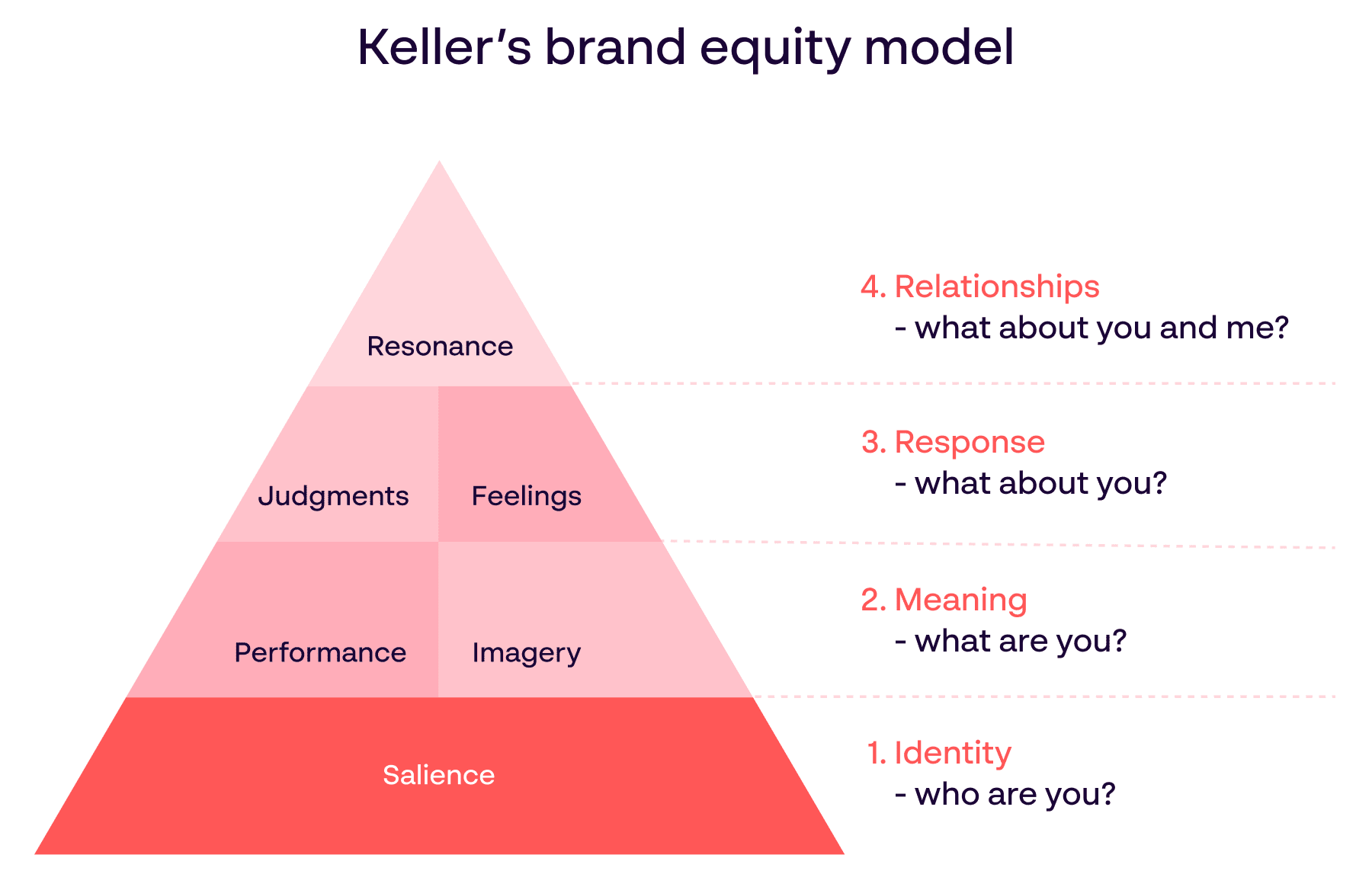
If you’d like to know more, check out our blog post explaining customer-based brand equity and the power it offers your organisation.
2. Brand reputation
A key part of brand equity is your brand’s reputation with consumers, employees, stakeholders and beyond.
The latest generations of customers and candidates place a much higher value on reputation and ethical consumerism, with many wanting nothing to do with companies that hold a negative reputation. In fact, 94% of customers say they avoid businesses after reading a bad review.
Brand management is vital to building a strong brand reputation. It helps to reduce the frequency of miscommunications and inconsistencies that impact your standing, and ensures you know how to handle a crisis or public relations challenges.
3. Brand loyalty
Loyal customers are worth their weight in gold – in some cases, quite literally. When 65% of the average company’s revenue comes from repeat business, having a devoted audience is the foundation for consistent, stable profitability.
Poor brand management can get in the way of growing a loyal fan base. By delivering consistent brand experiences and on-brand campaigns, you build trust and emotional connections with your most active buyers. This improves retention, boosts referrals, and supports your sales, helping ensure buyers stay beyond Christmas and other high-traffic occasions.
This is also key to the success of your employer branding. Employees who buy into your company’s vision and values are more likely to stick around and work to the best of their abilities.
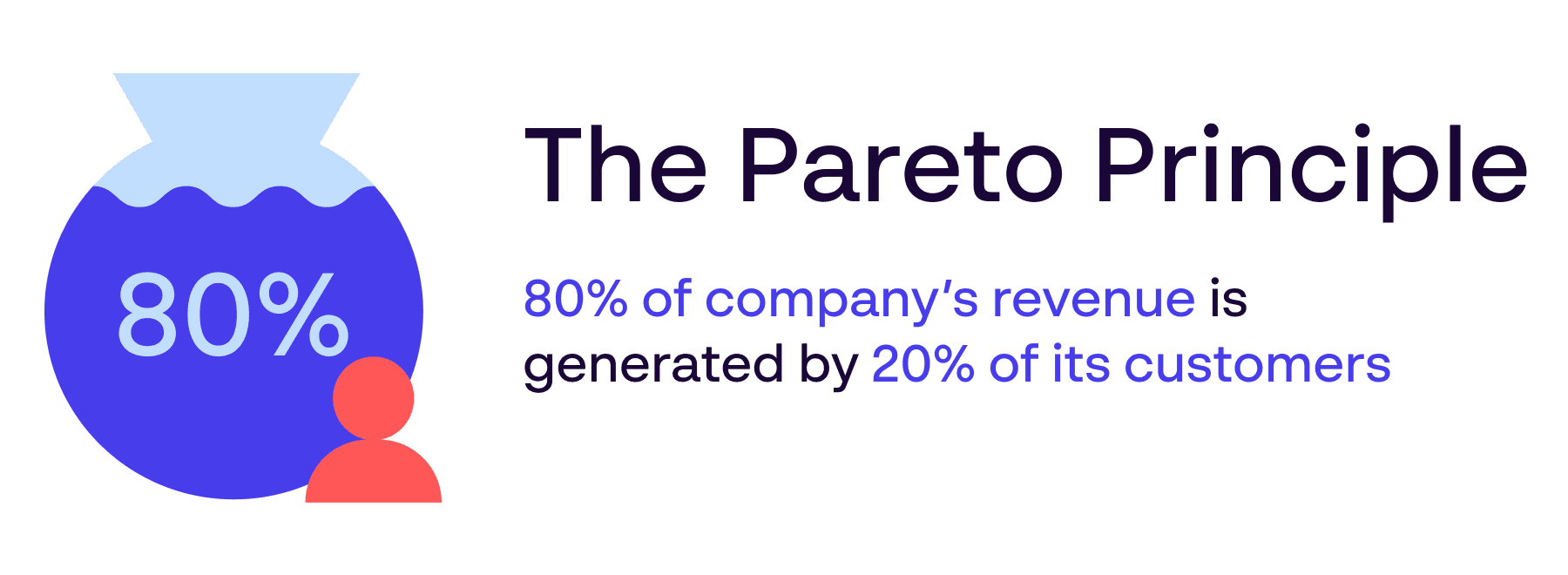
4. Brand awareness
Does your brand exist if no one knows about it? One of the major objectives of brand management is to raise the profile of a brand, ensuring it has a clear, distinct presence everywhere your target audience is looking – from search engines to posters and billboards.
But, it’s not enough to simply be present with your audiences; you must make sure your company’s brand is presented consistently to build meaningful brand awareness. Otherwise, different people will have a different perspective of your brand depending on the channel they engage with – this confusion breeds mistrust.
So, brand management is critical to not only maintain a steady flow of content across all marketing channels, but also to monitor that this is aligned with your overall branding.
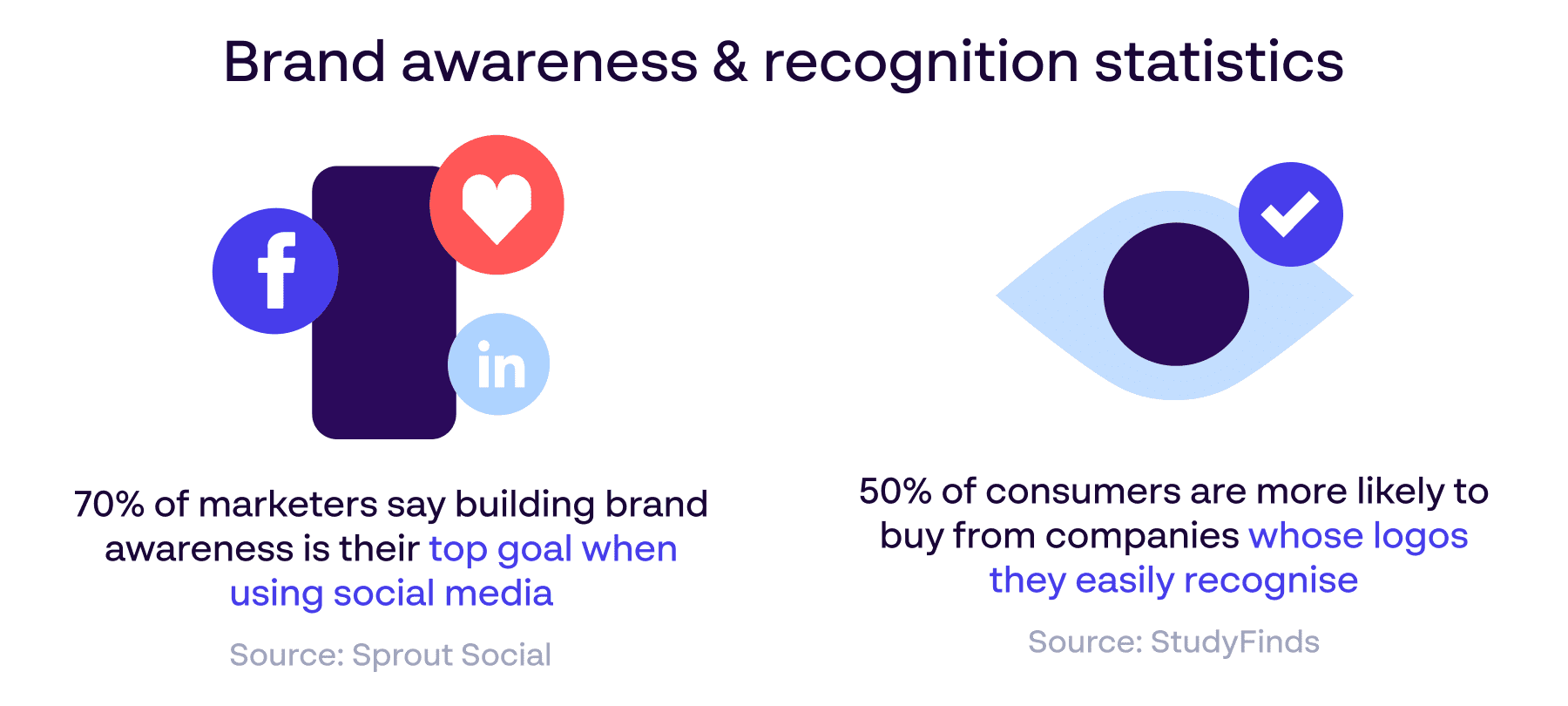
5. Brand recognition
Strong awareness leads to better brand recognition. This is when your audiences, through regular exposure to your branding, start to recall and think of your organisation without prompting. This is valuable in generating a loyal, trusting customer base, and from there converting consumers into fully-fledged brand advocates.
Brand management helps you build that familiarity by keeping your brand communications in lockstep at every touchpoint. From consistent TV spots and paid media posts that enhance ad recall, to maintaining the same tone across your social media comms, effective management of your brand presentation helps you become a recognisable name in your market.
Remember – it takes between 5 and 7 impressions for someone to remember your brand on average. Their journey with your brand must be managed with real care and attention.
6. Brand consistency
We’ve referenced this several times already, but it’s impossible to overstate the importance of brand consistency when managing your brand.
This is when your messaging, graphics, designs and overall brand identity are coherent on every platform. Your website, social media channels, advertising, brochures, emails – every piece of branding must sing from the same hymn sheet.
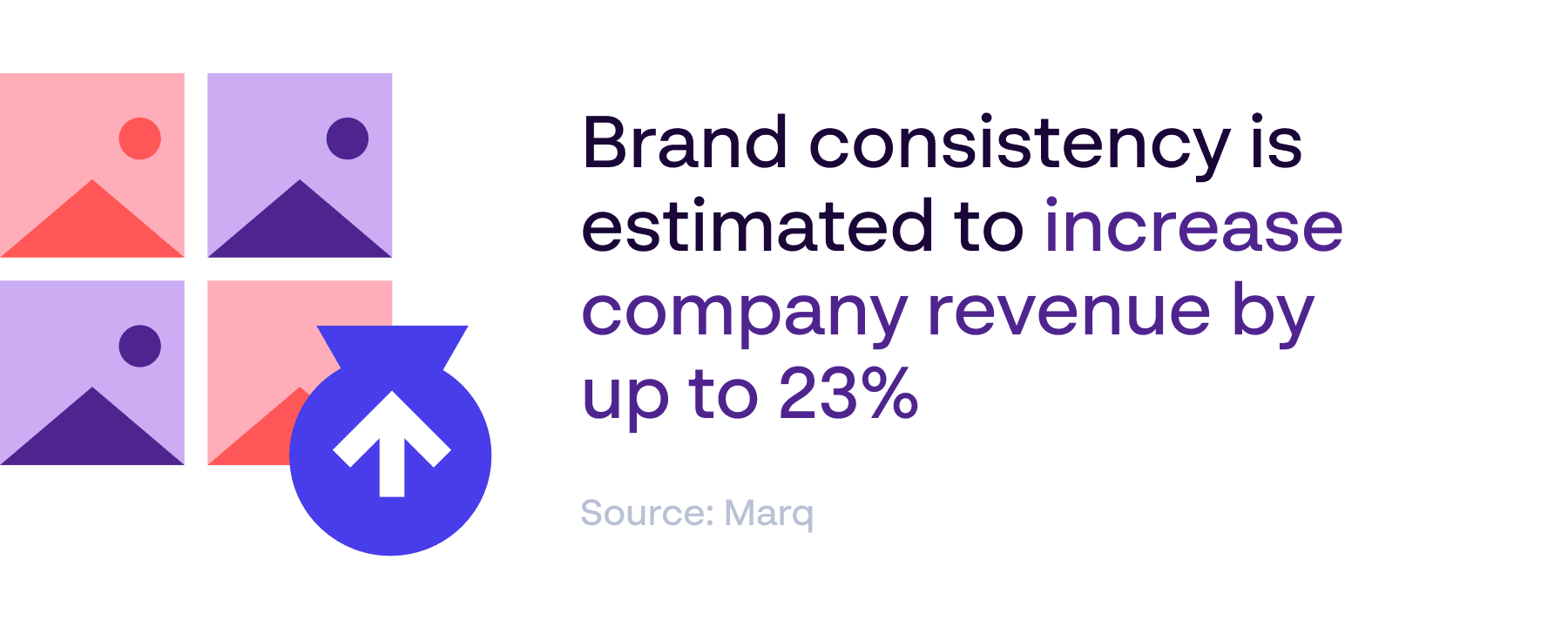
Effectively overseeing brand guidelines, templates and company portals, is an essential part of achieving this unbroken flow of communication.
Successful brand management makes a tangible difference in each of these critical areas – and gives you a competitive advantage over others who don’t prioritise this control.

Why is brand management important for modern companies?
As the developers of our own brand management platform with over a million unique users, we know how important this is in growing the value, understanding and equity of your brand.
But the benefits don’t stop there – here are 5 more reasons why brand management is an essential practice for your organisation.
5 benefits of effective brand management
1. A platform for market expansion
A well-managed brand creates a platform for your organisation to grow. Whether you want to expand your product and service offerings, or go through the rebranding process, having a loyal customer base formed through consistent, structured branding makes these efforts much simpler and more likely to succeed.
In addition, the stability of a well-managed brand can help make your position in the market less volatile over time. As every industry’s landscape shifts, this can provide a great layer of security.
2. Improved workflow and cost efficiency
Efficiency is the heart of better productivity and performance, and brand management software helps you achieve this both in your workflow and cost efficiency.
Having a team or platform in place to oversee the creation, sharing and usage of brand assets makes campaign execution significantly more seamless. No back-and-forth email chains, ad-hoc meetings and constant rounds of proofing – everything becomes smoother and more streamlined with brand management.
This enhanced workflow naturally leads to greater cost efficiency. With the support of a brand management team and/or solution, your marketers can find the assets they need and produce new collateral faster, all with the reassurance they are always on-brand. Campaigns get turned around quicker, and you achieve more for less.

3. Empowered and engaged employees
Modern employees seek engagement and purpose – a sense of belonging beyond their day-to-day responsibilities. Strong brand management cultivates this, helping ensure that all internal communications and branding are aligned, so that your teams stay connected to the vision and values at the core of your brand identity.
Furthermore, a dedicated brand management platform encourages collaboration across departments, which is essential for a brand that works on every level – from what your customers see, to how you engage existing employees and top candidates.
Want to track and improve the performance of your internal branding? Discover the 12 corporate communications metrics you should be monitoring.
4. Greater customer lifetime value
In addition to increasing sales and enabling you to upscale prices, great brand management also helps you achieve more value from your customers across their lifespan.
When consumers are presented with a consistent, continuous presentation of your brand identity and enjoy positive brand experiences, they are far more likely to purchase other products and services you offer.

5. Enhanced marketing strategies
Coherent brand management helps teams coordinate and strategically plan campaigns in real-time. Without a proper approach or the right tools, your teams can quickly end up working disparately, resulting in inconsistencies and miscommunications that damage your brand.
With a central, all-encompassing brand management strategy and platform, your marketing strategies become clearer and simpler to execute. This then leads to greater brand recognition, more loyal customers, and robust brand equity.
How does brand management contribute to long-term business success?
By delivering the expertise, tools and framework for a strong brand identity, brand management sets your organisation apart in your industry, and fosters a loyal following.
Naturally, forming deep emotional connections with your customers, employees and wider stakeholders is an ideal foundation for long-term business success:
- Encouraging repeat purchases
- Permitting premium pricing
- Sustaining profitability
- Improving brand advocacy
- Building employee retention
- Improving resilience to market fluctuations
- Bolstering general reputability
These and so much more become attainable goals with better brand management.

6 steps to succeed at brand management
Now we’ve established the value that successful brand management can bring to your organisation, how do you achieve that success? Here are 6 steps we know can make a difference in keeping your brand under control and working for your business.
1. Define your brand positioning and identity
Start with the basics – how do you want your brand to be positioned? What is its unique tone, personality and visual identity? While this is more “branding” than brand management, knowing this sets the framework for the values and characteristics you want to present to your various target audiences.
After all, if your brand manager doesn’t have a firm grasp on what your brand represents, then how can they know if it’s being well managed?
Make sure all aspects of your branding are nailed down and documented, including:
- Brand name
- Logo
- Graphics, designs and visual elements
- Tone of voice
- Mission and vision statements
- Colour palettes
- Typography
- Brand story
2. Create effective brand guidelines
Speaking of documentation, arguably the most important document for a brand manager to keep on top of is your brand guidelines. This is your Brand Bible – the rules and parameters that ensure your brand is never misconstrued or misrepresented on any channel.
Amazingly, 15% of companies report not having brand guidelines, which is a huge oversight. Making sure you have these in place, and that they contain at least everything mentioned in the previous point, is essential to keeping your brand consistent at every touchpoint.
To succeed, they also must be accessible. With this in mind, establishing a dedicated digital brand hub – a single point for teams to locate everything they need to know about how to showcase your brand – can make managing your brand simpler and more comprehensive.

3. Focus on your corporate communications
Coordinating your corporate communications – both to your internal and external audiences – is one of the biggest responsibilities for brand management professionals.
From your marketing materials, email campaigns and customer service tools, to crisis communications at a pressing time, it pays dividends to craft templates around every style of message you generate. Not only will this speed up the time it takes to produce assets, but it also helps you stay on top of the consistency of your communications.
It’s also important to give your brand management and corporate communications teams goals to help ensure the performance of your comms never dips.
4. Bring your digital brand assets under one roof
Against the ever-growing demand for content among consumers, managing the sheer volume of assets your company produces can be extremely hard. Especially for global brands who want to tailor their messages to local audiences, it can feel practically impossible to keep track.
For brand managers, the solution can be found in Digital Asset Management (or DAM) systems. These platforms allow you to store, share and oversee every digital asset your marketing teams produce in one location – a single source of truth for your organisation.
For brand managers, this means much less stress following email trails and manually sending assets to your locations worldwide. Everything becomes much more manageable with integrated DAM solutions, establishing a structure that brings order to any asset-based chaos.
5. Regularly measure the success of your brand management efforts
Brand management is a broad topic, and there’s no universal metric that indicates whether you’re doing a good job or not. But there are several brand management KPIs you can monitor that will indicate the success of your approach, and guide you to worthwhile adaptations. These include:
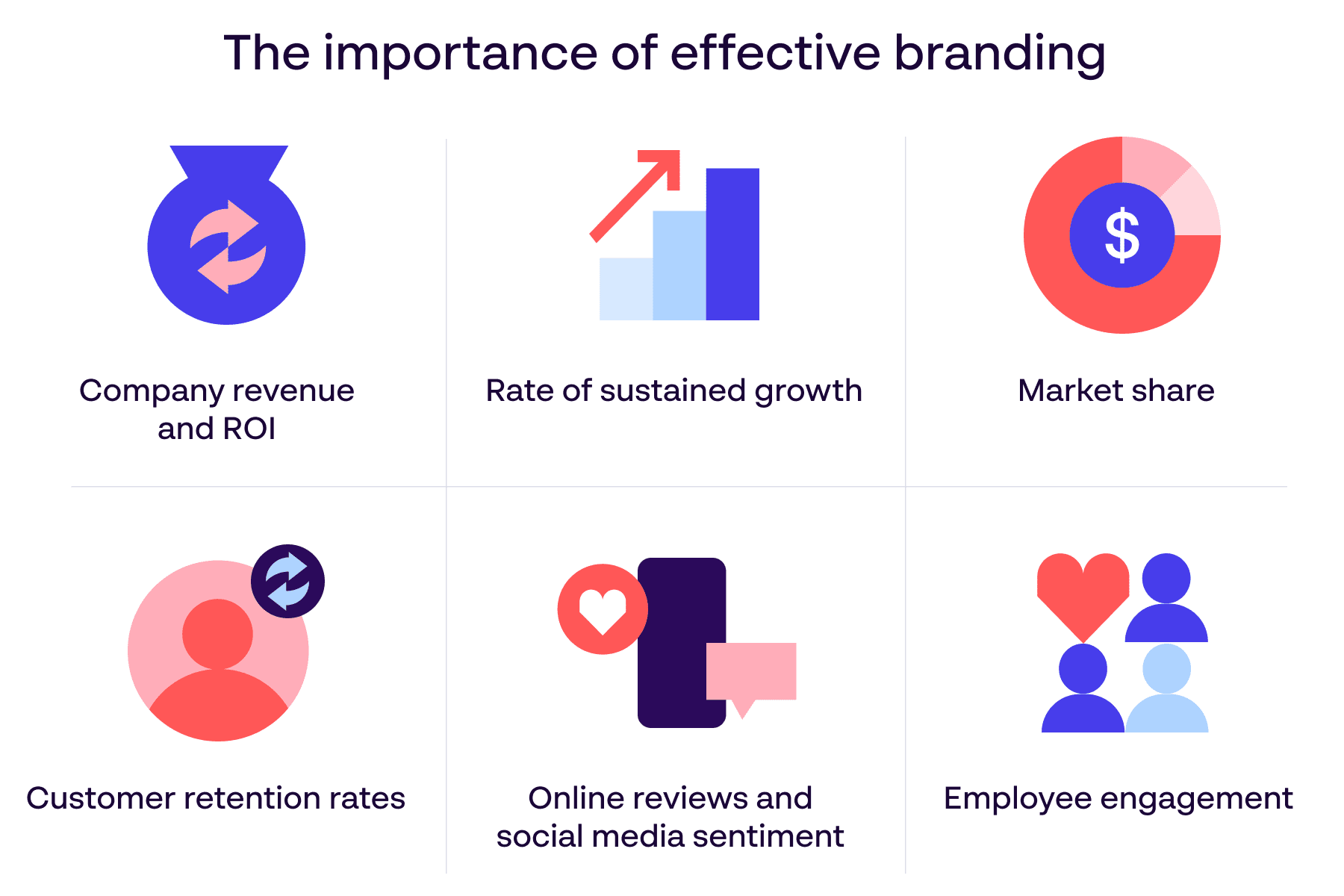
Plus, examining analytics about the usage of branded assets, how often your digital brand guidelines are visited, and campaign behaviours can help you prove your team’s adoption of your branding – helping make sure your global on-brand culture is maintained.
6. Implement a brand management system
A brand manager’s job is tough, requiring oversight across multiple departments to keep branding consistent and coherent on every channel. That responsibility becomes a lot less daunting with the right software on your side.
Implementing a brand management system can make building your brand and expressing it consistently far easier – empowering everyone in your team to become their own brand manager. Through this technology, you can gain the ability to:
- Contain all elements at the heart of your brand in one easy-to-access destination
- Store all digital assets in a single location for your teams globally
- Produce on-brand assets efficiently and accurately with smart, sophisticated templates
- Plan out campaign execution in a streamlined, coherent way
- Monitor how closely your teams are adhering to brand consistency
Fundamentally, the right brand management solution can streamline many stressful, manual tasks associated with keeping a brand stable. It also automates some of the tedious, granular aspects of brand management, meaning teams can focus more on bigger-picture matters.
Not sure if this software is necessary? Check out our post on signs that let you know you need a brand management platform.
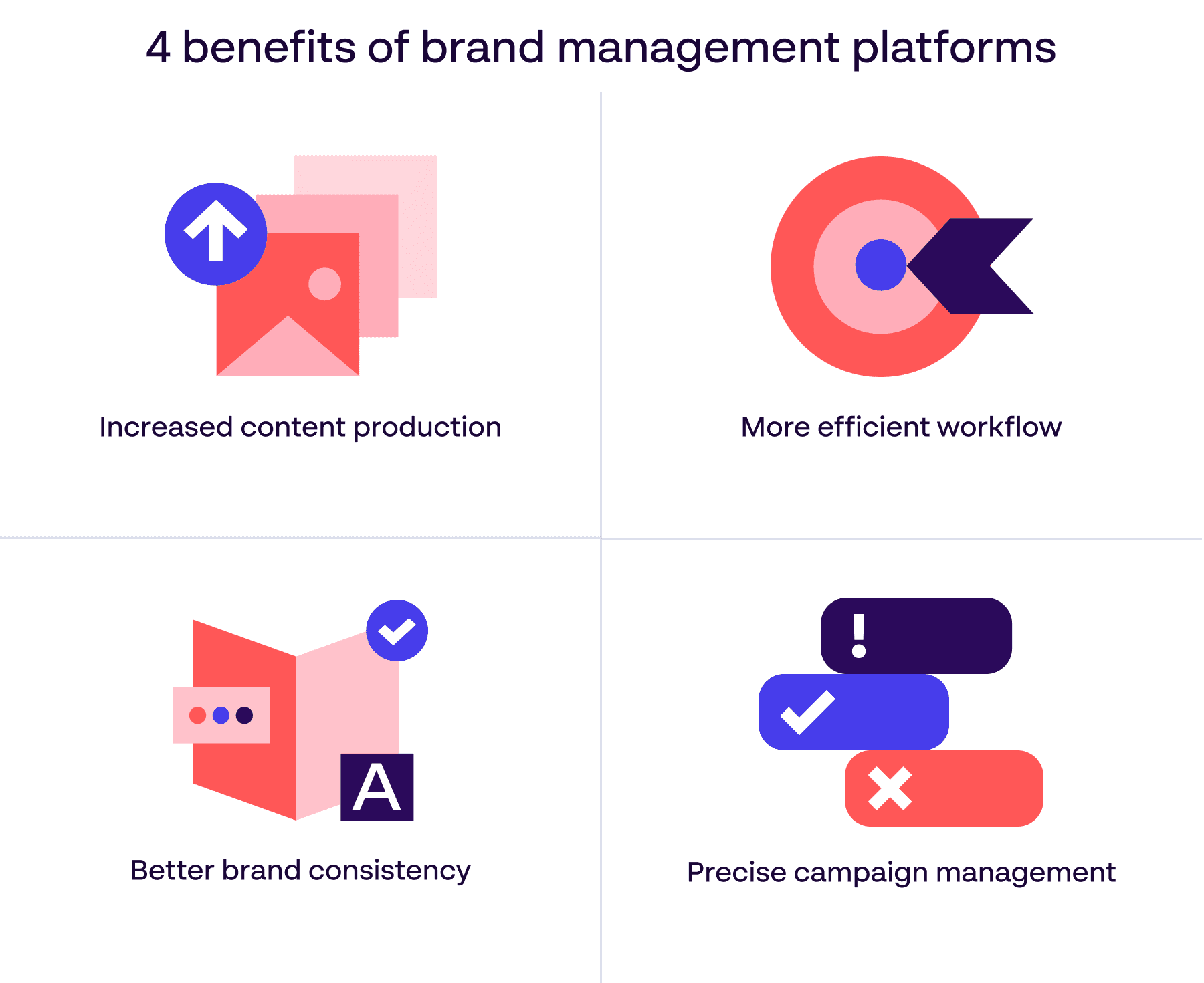
3 common brand management challenges – and how to beat them
A brand touches every aspect of an organisation; managing this is already a tough challenge. However, in our conversations with brand managers across the globe, the same hurdles tend to come up in their bid to secure the consistency and performance they’re looking for.
Here are 3 of the most prominent brand management challenges we hear about, and our advice to combat them.
1. Multichannel marketing
First, the huge volume of marketing channels modern companies are expected to be present on is a major burden. Websites, emails, videos, digital adverts, social media marketing – today’s customers expect a consistent experience at every touchpoint. Any break in this chain can damage trust, forfeit sales and hurt your reputation.
So, how do you maintain this consistent voice in all areas, while still fitting your assets to the best practices of each channel? For brand managers, intelligent templates can provide reassurance that every asset your team produces is aligned with company guidelines, reducing the time, money and stress associated with multichannel marketing.
2. Globalisation
In addition to the plethora of communication channels, global brands must contend with adapting their messaging to meet the specific culture, language and expectations of local audiences. Without careful management, the risks of going off-piste in a particular location can harm your reputation – like when Ford informed customers in Belgium that every car has a “high-quality corpse”.
Here, brand managers should look to DAM systems to reduce the risk of these cultural blunders. Having a platform that allows you to store imagery, videos and more for a certain audience, and put in fail-safes to stop these from being used inappropriately, DAM technology simplifies how you manage your messages to every target market.
3. Rebranding
A complete company rebrand can be a minefield to navigate, even if pursued for the right reasons. Most people are naturally resistant to change, so this kind of upheaval must be managed expertly to prevent a costly failure – just look at Gap’s experience to see what can go wrong.
How do you ensure such a significant change sticks? Here are a few things to consider when rebranding your business:
- Reaffirm and settle on your company’s vision, mission and values
- Audit existing brand assets
- Secure buy-in from key stakeholders
- Assign a team to oversee the rebrand
- Update your brand guidelines
- Communicate the change with your customers
- Plan an effective launch campaign
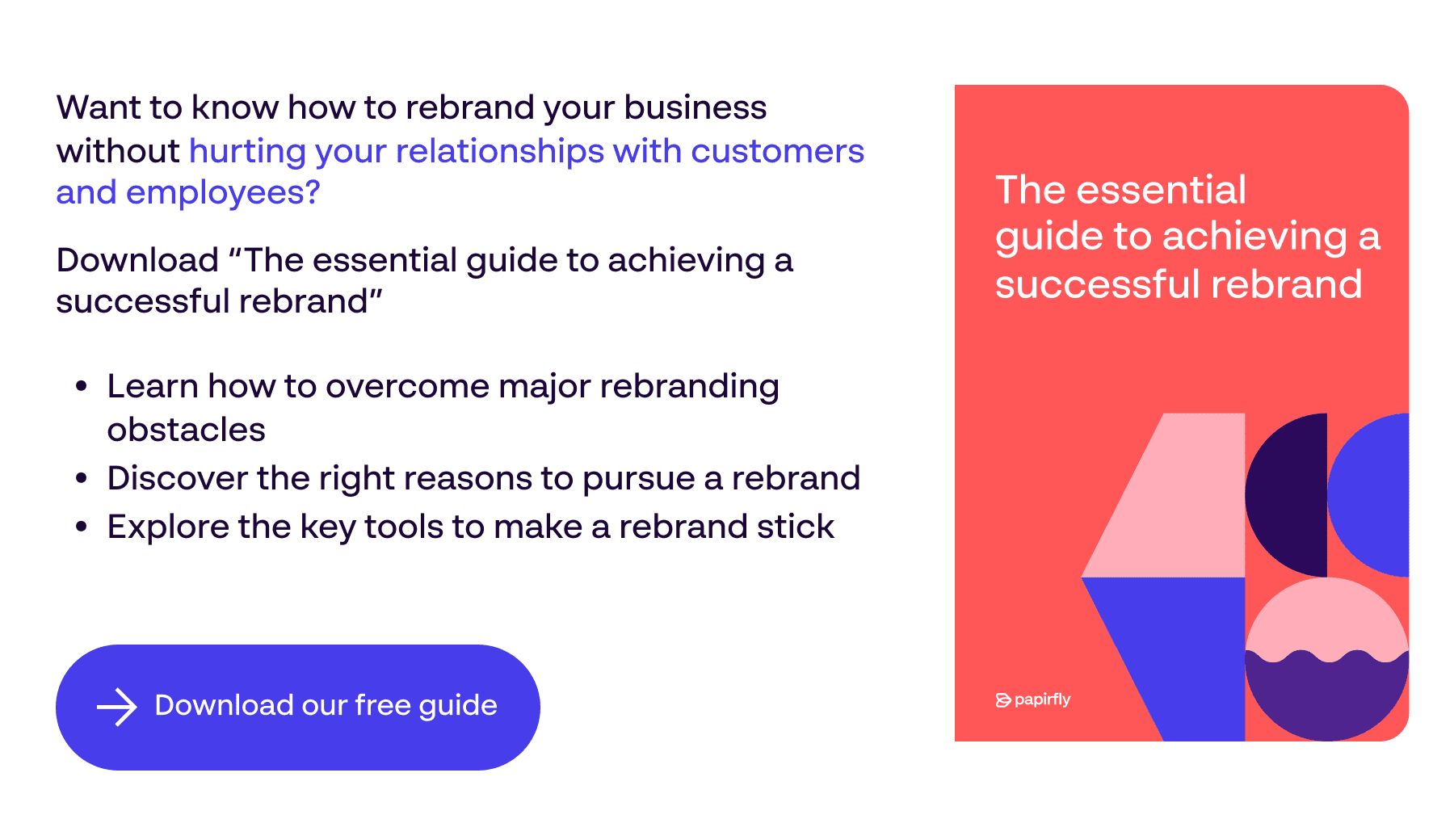
What should you look for in a brand management platform?
Looking to invest in brand management software, but you’re not sure what the right system looks like for you? Here are 14 key questions to ask a potential vendor:
- Does your platform allow me to organise, store and manage all types of brand assets?
- Can the platform centralise our brand guidelines and other brand-related documents?
- Does it allow our teams to work collaboratively?
- Is the user interface intuitive and easy to navigate for team members?
- Will it speed up the time it takes to locate branded collateral or create assets?
- Can you customise templates for specific audiences while maintaining consistency?
- Does it include Digital Asset Management capabilities?
- Will it reduce our dependence on designers and external agencies?
- Does it back up all assets and information contained in case something goes wrong?
- Can the platform scale and adapt to evolving brand management needs?
- Are there built-in analytics and reporting features to track its performance?
- Can you prove that it will deliver a meaningful return on investment?
- Can your platform integrate with various software our teams currently use?
- Does it prioritise data security with features like role-based access controls and encryption?
Brand management is a massive priority in every organisation, so it’s important to ensure the software you select fulfils your expectations and helps make life easier, not harder.
5 companies harnessing the power of brand management software
If you’d like to better understand the difference high-quality software can make, here are 5 companies achieving brand management excellence with the right platform:
1. Unilever
Unilever faced inefficiencies in brand asset management, lacking centralised coordination. This led to redundant efforts by local teams, creating assets from scratch and relying on external agencies.
With a brand management solution, Unilever gained greater oversight over their brand communications. By enabling custom workflows and approvals, fostering better collaboration, and reducing reliance on external agencies, they enhanced brand consistency while cutting costs.
2. Helly Hansen
Helly Hansen revolutionised their brand management with a seamless global solution, integrating online brand guidelines, Digital Asset Management (DAM), and templates.
This unified approach maintained brand consistency across markets and stakeholders, vital for a brand with extensive distribution such as theirs.
3. IBM
Faced with maintaining a uniform brand identity across 65 regions with disparate marketing teams, IBM brought management of their employer branding under one all-encompassing platform.
With this central location to oversee asset standards and design templates, IBM now enforces consistent branding that has benefited their recruitment efforts.
4. Vodafone
Vodafone achieved greater brand clarity, enhanced consistency in employer communications, and reduced time-consuming approvals by implementing brand management software.
Transitioning from a “telco to techno” brand, Vodafone is empowered by this technology to explore digital transformation opportunities for talent attraction and skills development.
5. BMW NE
BMW NE employed a brand management solution to automate and centralise their branding, enhancing campaign execution for local dealers with efficient communication and coordination.
With this tool, stakeholders can access and adapt marketing collateral with complete consistency, tailoring local materials in line with BMW’s core brand strategies.
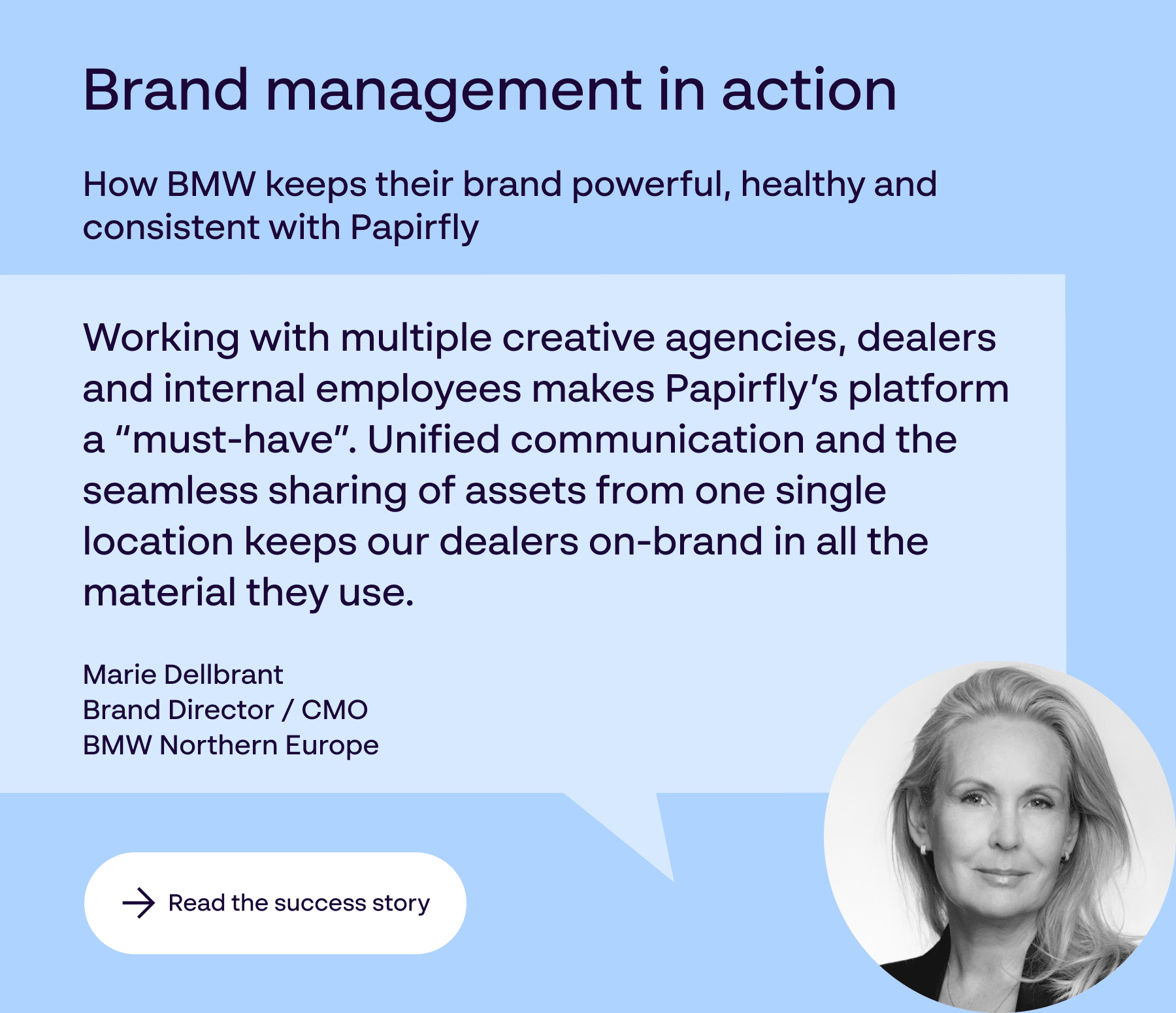
How will AI steer the future of brand management?
The ongoing evolution of AI is influencing every industry; brand management is no exception. While this is still in its infancy, we’re already seeing how AI can further streamline and simplify brand management for teams worldwide – here are just a few examples:
Customer service automation
As AI-powered chatbots and virtual assistants grow more sophisticated, they will be able to provide 24/7 customer support, answer questions and resolve issues, all while communicating in your brand’s unique tone of voice.
Automatic asset production
The growing sophistication of prompt engineering and AI-driven image generation will soon enable marketers to generate high-quality, on-brand assets at the press of a button. This will reduce companies’ reliance on external agencies, allowing them to produce at pace in-house.
Instant asset identification
Within a Digital Asset Management solution, “contextual search” is a developing trend that will empower teams to locate the exact assets they require from an extensive library just by inputting a relevant prompt.
Brand monitoring and sentiment analysis
AI tools can monitor online mentions, reviews, and social media conversations about your brand in real-time. This allows companies to manage their reputation and respond promptly to emerging issues or crises with greater immediacy.
At Papirfly, we’re constantly experimenting with AI to discover how we can unlock further efficiencies for our clients. If you’d like to know more, explore our AI solutions for brand management.
Empower your people with one brand management platform
We hope that this ultimate guide to brand management has shown you the importance of directing your brand at every touchpoint, and provided some helpful tips for approaching this vital task in the future.
At Papirfly, we are helping over 600 companies worldwide build an on-brand culture, create unlimited enterprise assets, and activate their brand everywhere with absolute control and consistency.
- POINT: Control every aspect of your brand and deliver unbreakable brand guidelines
- Place: Deliver your single source of truth with our industry-recognised DAM solution
- Produce: Create unlimited on-brand assets with design templates aligned to your guidelines
- Plan: Simplify campaign execution for your teams with collaborative planning
- Prove: Refine your brand strategy with real-time data and analytics
Ready to unlock a faster, simpler future for your organisation? Discover the all-in-one brand management platform today.
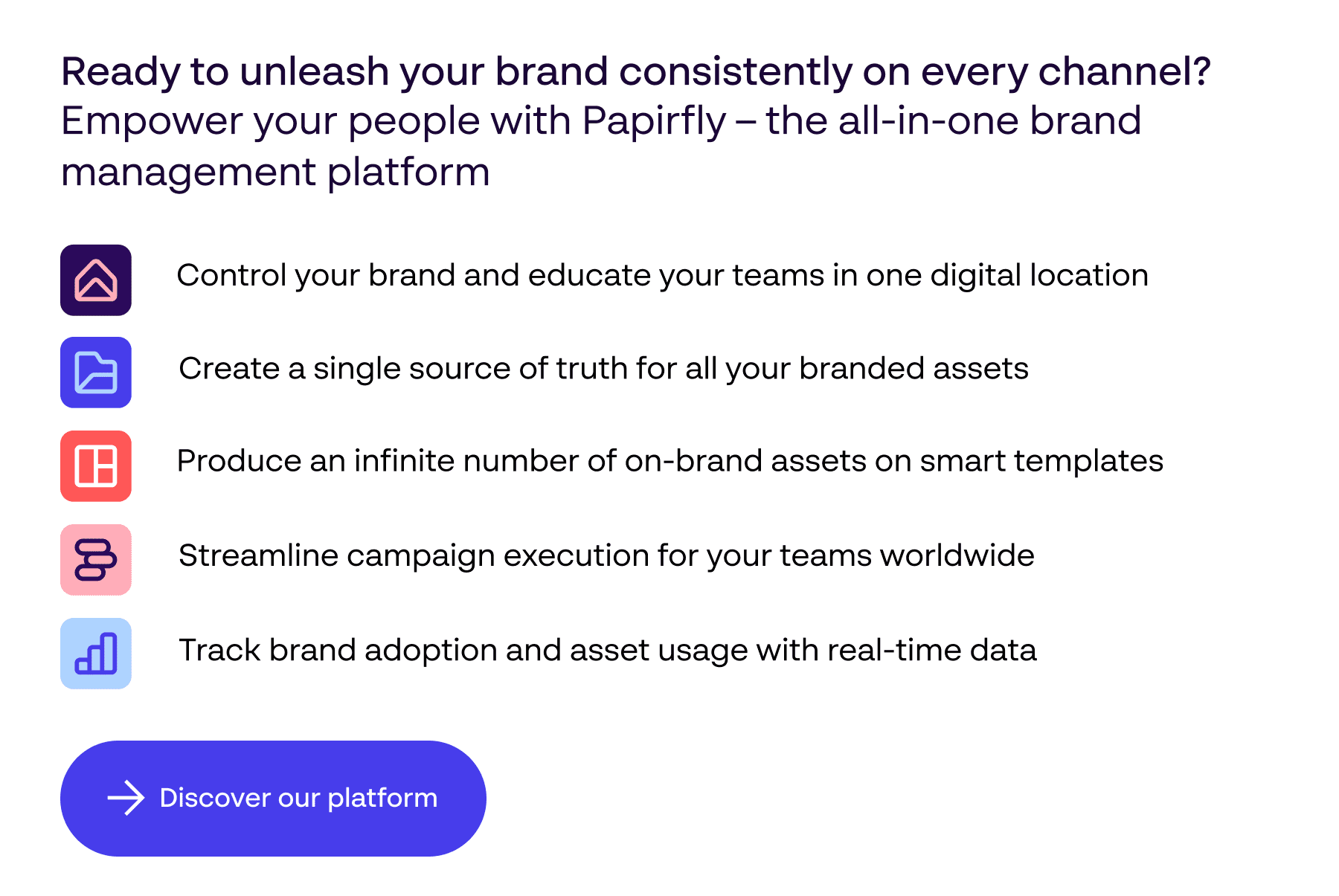
Table of contents:
- What is brand management?
- 6 defining principles of brand management
- Why is brand management important for modern companies?
- 6 steps to succeed at brand management
- 3 common brand management challenges… and how to beat them
- What should you look for in a brand management platform?
- How will AI steer the future of brand management?
- Empower your people with one brand management platform
